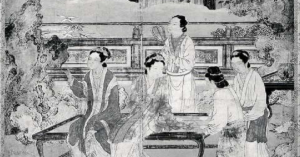1500-Year-Old Skeletons Found Embracing At Chinese Cemetery
It is thought that they may have been ill and died together as a result, or the woman may have killed herself after the man died of his injuries.
When we get married, we promise to love that person for the rest of our lives. Many of us also hope that we can extend that love even further.
Perhaps this is seen in a very unique way, thanks to a 1500-year-old graveyard that was recently excavated in the city of Datong in Shanxi province.

They discovered something that they weren’t expecting and submitted the find to the International Journal of Osteoarchaeology.
What they found was a couple who had been buried some 1500 years ago who was still in a lover’s embrace. It was a display of love that was made to last forever.

Some 600 common burial plots are located within the cemetery. The embracing skeletons were discovered when they were doing a construction project in the area. It is thought that during the fifth and sixth centuries, a nomadic population existed in the area and they are responsible for the graveyard.
The female has her head on the man’s shoulder and they are intertwined with each other. It is the first time that skeletons were found in such an embrace in China. It was decided after finding them that they would remain in that embrace.
Archaeologists discover a 1,500 year-old burial in China with two embracing skeletons, offering a glimpse of "love, life, death, and the afterlife during a time of intense cultural and ethnic exchange.”https://t.co/2KCK2Qt1Jo#Archaeology #China #Burials pic.twitter.com/DCfpJbu5Ld
— The Archaeological Conservancy (@tac_org) August 25, 2021
Something else that was interesting is that a simple band was worn on the ring finger of the female’s left hand. It wasn’t common for wedding rings to be used during that time, so researchers were wondering if it signified something when they were married.
It seems as if both individuals are under the age of 40. The man is between 29 and 35 and has injuries to both his finger and arm. The woman was likely 35 or 40 years old when she died, yet she doesn’t have any injuries. It is thought that they may have been ill and died together as a result or the woman may have killed herself after the man died of his injuries.

Professor Qun Zhang is the co-author of the paper who talked to The South China Morning Post. He said: “During the Northern Wei era, Buddhism was popularized and people’s concepts of the afterlife became more abundant.”
It was a rare find, but it is thought that perhaps they felt they would be able to journey on together after death.
SKM: below-content placeholderWhizzco for DOT

